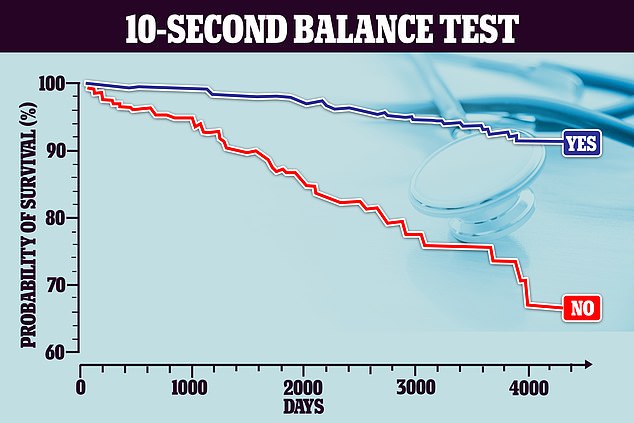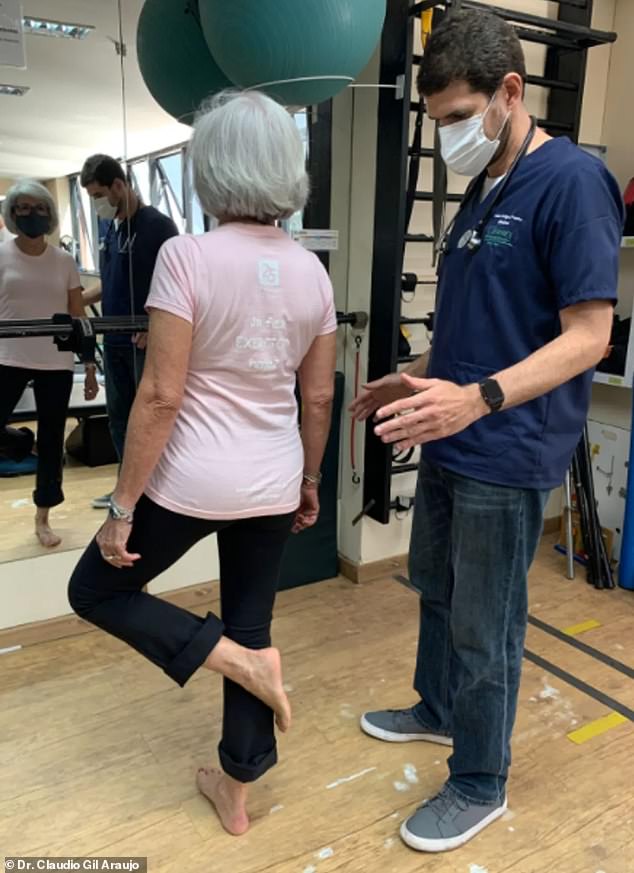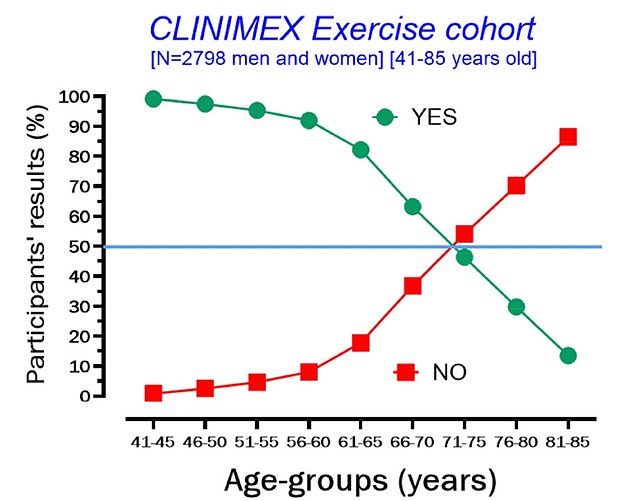A simple 10-second test may be able to predict if you’ll outlive your peers as you age
Older people who can balance on one leg for 10 seconds are more likely to outlive their peers, a study suggests.
Researchers in Brazil asked participants between the ages of fifty and seventy to stand on one leg for ten seconds, with the other leg behind them and their arms at their sides.
All 1,700 participants were then followed for seven years, with analysis showing that those who could not balance were 84 percent more likely to die during the study than those who could.
Researchers suggested that difficulty finding balance may be a sign of muscle loss, putting older people at increased risk of falls, which can be fatal.

The above shows those who were able to complete the balance test at the start of the study (blue line marked YES) and those who could not (red line marked NO) and their chances of survival over time. It reveals that those who could not maintain balance were more likely to die from any cause


Above you see a woman doing the balance test. She has her arms at her sides and one leg behind the other
Research shows that people lose muscle mass approximately one to two percent per year from the age of thirty. By the time they are 80 years old, people have about half as much muscle as they did at 40.
This decrease in muscle mass increases the risk of accidents, such as falls, which affect 36 million adults aged 65 and older in the US every year.
Approximately 32,000 deaths each year are directly caused by falls, but in some cases, complications from the fall can ultimately lead to death.
Research shows that people aged 80 and older who fall are twice as likely to die within a year than their peers who have not fallen.
Led by the Exercise Medicine Clinic, CLINIMEX in Rio de Janeiro, the study participants were on average 61 years old, overweight and 68 percent were male.
They all underwent a 10-second test at the start of the study – which revealed that 348 participants, or one in five (20 percent), could not balance successfully for the full ten seconds.
Among those in the 51 to 55 age group, the proportion who failed to balance was lower, at 4.7 percent.
But among adults age 70 and older, more than half — or 53 percent — couldn't complete the balance test.
After the first test, participants were followed for an average of seven years – from 2009 to 2020.
A total of 123 – or 7.2 percent – died with 4.6 percent of deaths among the group that could balance, compared to 17.5 percent in the group that couldn't.
Heart disease and cancer were the most common causes of death among the study's deaths, accounting for about 60 percent. Other documented causes included respiratory problems and Covid.
Explaining the results, the researchers – led by physician Dr Claudio Araujo, said: 'Aging is associated with a progressive decline in physical fitness and reduction or impairment in components of aerobic and non-aerobic fitness, including muscle strength, power, flexibility , balance. and body composition.
'It is also well known that the combination of sarcopenic obesity and loss of flexibility and balance is detrimental to overall health.
'This makes older adults with frailty more susceptible to falls and other serious adverse medical consequences.'


Above you see the proportion of people who were able to complete the balance test (green, YES) and not (red, NO), by age group at the start of the CLINIMEX study cohort.
Sarcopenia is defined as an involuntary loss of skeletal muscle and strength due to aging, which puts a person at greater risk for injury.
To prevent this decline and improve balance, experts recommend strength training – even in old age – to maintain and even increase muscle mass.
Some experts also recommend yoga to help with balance and flexibility.
When it comes to overall fitness, the World Health Organization recommends that all adults participate in at least 150 minutes of moderate-intensity aerobic physical activity each week, such as swimming, running, tennis, cycling or walking.
The research was published in the British Journal of Sports Medicine.
